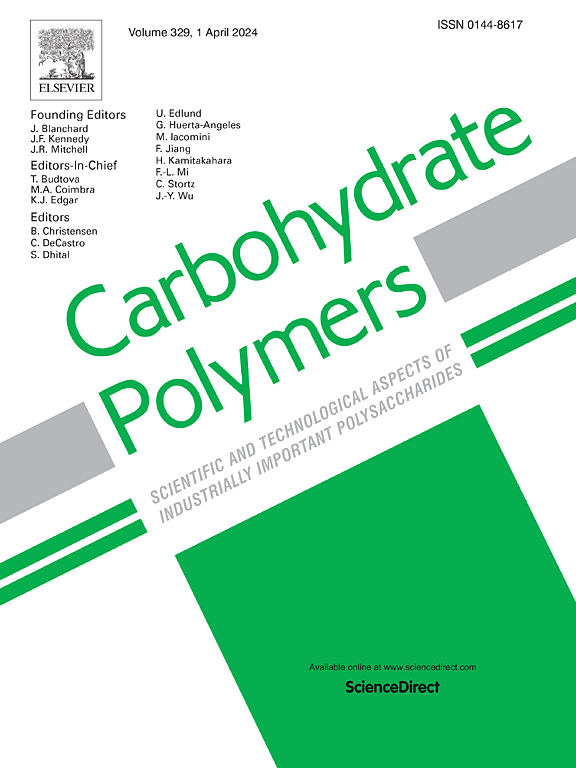NIR-responsive dextran / poly(lactide) hydrogels: Characterization of cleavable hydrogels and photoactivated release of proteins
IF 10.7
1区 化学
Q1 CHEMISTRY, APPLIED
引用次数: 0
Abstract
Polysaccharide-based hydrogels often lack mechanical strength and, when used for protein delivery, are generally limited to diffusion-based release. In this work, we developed robust polysaccharide- and polyester-based near-infrared (NIR)-responsive hydrogels. Hydrogels are made from photo-crosslinked methacrylated dextran (DEX-MA), methacrylated polylactide containing oxygen reactive species (ROS) sensitive thioketal groups (PLA-TK-MA), and covalently bound protoporphyrin IX (PPIX) that generates ROS under NIR irradiation. We investigated the effects of DEX methacrylation degree (3, 12 and 45 %), PLA molecular weight (2500 vs. 5000 g.mol−1) and DEX/PLA ratios (95/5 to 50/50) on the gels' rheological properties. We then examined the NIR-sensitivity of selected hydrogels by comparing their water uptakes and storage/loss moduli. Finally, we studied the release of a model protein, bovine serum albumin (BSA), from the hydrogels with and without NIR-irradiation. Results confirmed that protein release kinetics can be controlled by NIR-irradiation, with faster and complete release of BSA compared to non-irradiated samples.

nir响应右旋糖酐/聚丙交酯水凝胶:可切割水凝胶的表征和蛋白质的光激活释放
基于多糖的水凝胶通常缺乏机械强度,当用于蛋白质递送时,通常仅限于扩散释放。在这项工作中,我们开发了强大的基于多糖和聚酯的近红外(NIR)响应水凝胶。水凝胶由光交联甲基丙烯酸基右旋糖酐(DEX-MA)、甲基丙烯酸基含氧反应物质(ROS)敏感的硫酮基聚乳酸(PLA-TK-MA)和共价结合的原卟啉IX (PPIX)在近红外辐射下产生ROS制成。我们研究了DEX甲基丙烯酸化程度(3,12和45%),PLA分子量(2500 vs 5000g .mol−1)和DEX/PLA比(95/5和50/50)对凝胶流变性能的影响。然后,我们通过比较水凝胶的吸水量和储存/损失模量来检测所选水凝胶的nir敏感性。最后,我们研究了一种模型蛋白,牛血清白蛋白(BSA),在nir辐照和不辐照的情况下从水凝胶中释放。结果证实,nir辐照可控制蛋白质释放动力学,与未辐照样品相比,BSA释放速度更快,释放完全。
本文章由计算机程序翻译,如有差异,请以英文原文为准。
求助全文
约1分钟内获得全文
求助全文
来源期刊

Carbohydrate Polymers
化学-高分子科学
CiteScore
22.40
自引率
8.00%
发文量
1286
审稿时长
47 days
期刊介绍:
Carbohydrate Polymers stands as a prominent journal in the glycoscience field, dedicated to exploring and harnessing the potential of polysaccharides with applications spanning bioenergy, bioplastics, biomaterials, biorefining, chemistry, drug delivery, food, health, nanotechnology, packaging, paper, pharmaceuticals, medicine, oil recovery, textiles, tissue engineering, wood, and various aspects of glycoscience.
The journal emphasizes the central role of well-characterized carbohydrate polymers, highlighting their significance as the primary focus rather than a peripheral topic. Each paper must prominently feature at least one named carbohydrate polymer, evident in both citation and title, with a commitment to innovative research that advances scientific knowledge.
 求助内容:
求助内容: 应助结果提醒方式:
应助结果提醒方式:


